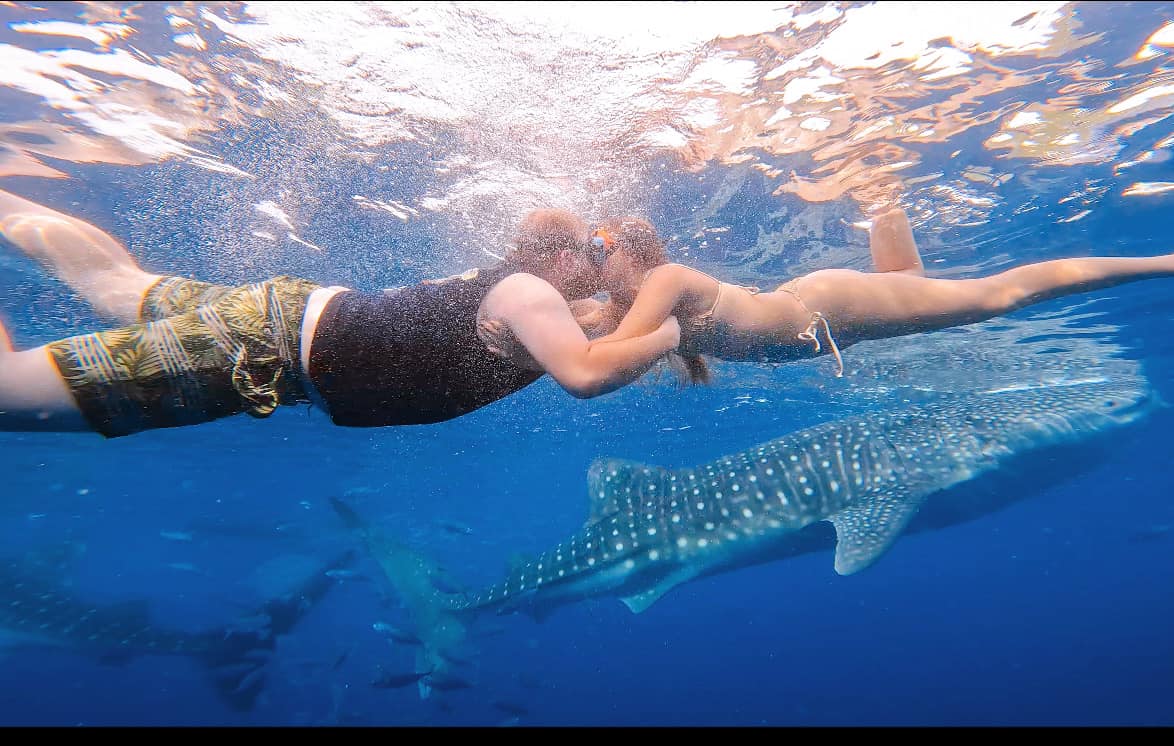Tour Packages on SALE! Book yours NOW!

Cebu, known as the “Queen City of the South,” is an island paradise brimming with rich history, vibrant culture, and spectacular natural beauty. Whether you’re a history buff, a thrill-seeker, or simply looking for relaxation, Cebu has something for everyone. Here’s an in-depth guide to the top 25 tourist spots in this tropical gem.
Perched 300 meters above sea level in Beverly Hills, this temple offers not just a spiritual retreat but also panoramic views of Cebu City and Mactan Island. The temple, built by Cebu’s Chinese community in 1972, is a cultural icon with its dragon statues and pagoda-style roofs. Visitors can experience traditional Taoist rituals, such as lighting joss sticks and making wishes, amidst tranquil surroundings and beautifully landscaped gardens.
Often called Cebu’s “Taj Mahal,” the Temple of Leah was built by a local businessman as a symbol of eternal love for his late wife, Leah Albino-Adarna. The temple’s Roman-inspired architecture features grand staircases, marble statues, and a collection of antique pieces from the couple’s travels. It’s a must-see for romantics and architecture enthusiasts alike, offering breathtaking views of the city and the surrounding mountains.
Also known as the “Celosia Flower Farm,” Sirao Flower Garden is an explosion of colors with its vibrant rows of celosia flowers that bloom year-round. With its windmills and Dutch-inspired aesthetic, it’s a dream destination for photographers and nature lovers. Wander through fields of sunflowers, daisies, and other blooms, or sit by the garden’s hilltop terraces to soak in the peaceful, flower-filled landscape.
Located in the coastal town of Cordova, this unique café features thousands of LED roses that illuminate as the sun sets, transforming the area into a field of glowing flowers. It’s not just a café; it’s an experience that blends romance and modern design. Sip on coffee or dine al fresco while enjoying the mesmerizing view of the city’s twinkling lights across the sea.
At 1,013 meters above sea level, Osmeña Peak, located in Dalaguete, offers panoramic views of jagged hills, reminiscent of the Chocolate Hills in Bohol, but with a more rugged, alpine twist. The peak is accessible via a moderate hike, and upon reaching the summit, trekkers are rewarded with breathtaking views of the coastlines and neighboring islands. It’s an adventurer’s paradise, perfect for sunrise and sunset hikes.
Nestled in the town of Badian, Kawasan Falls is a series of three cascading waterfalls known for their strikingly blue, crystal-clear waters. The falls offer canyoneering activities where adrenaline junkies can rappel down rock formations, jump off cliffs, and swim through natural pools. For those seeking a more leisurely experience, bamboo rafts and picnic areas are available for a relaxing dip in the cool waters surrounded by lush, tropical landscapes.
Pescador Island, located off the coast of Moalboal, is one of Cebu’s premier dive spots. The island is famous for its coral gardens teeming with marine life, including sea turtles, colorful fish, and a variety of coral species. The highlight of any dive here is the Sardine Run, where millions of sardines swirl in massive schools, creating mesmerizing underwater patterns. Snorkelers can also enjoy the shallow reefs, making it an ideal destination for both novice and experienced divers.
Oslob has become world-renowned for its whale shark interactions, where visitors can swim alongside these gentle giants in their natural habitat. This experience offers a unique opportunity to observe these magnificent creatures up close. Local guides ensure that interactions are respectful and safe for both visitors and whale sharks, making it a memorable eco-tourism adventure.
Near the whale shark site in Oslob, Tumalog Falls presents a different kind of natural beauty. The waterfall’s wide curtain-like cascade creates a misty and magical atmosphere, ideal for a quiet retreat into nature. Surrounded by verdant forest, the turquoise basin at the foot of the falls is perfect for cooling off after a morning of adventure.
Sumilon Island’s sandbar is a picture-perfect paradise featuring soft white sands and crystal-clear waters. The shape and size of the sandbar change with the tides, offering different experiences throughout the day. The island also hosts one of Cebu’s top luxury resorts, making it a sought-after spot for snorkeling, scuba diving, and exploring blue lagoons and mangroves.
The Monastery of the Holy Eucharist, also known as Simala Shrine, is a grandiose castle-like church in Sibonga, built as a testament of faith and devotion. The shrine is known for its miraculous stories, drawing pilgrims and tourists alike. Its Gothic-inspired architecture, sprawling grounds, and intricate statues make it both a religious and architectural marvel, perfect for spiritual reflection and sightseeing.
Planted by Portuguese explorer Ferdinand Magellan in 1521, this cross marks the introduction of Christianity in the Philippines. Located in a small chapel next to the Basilica del Sto. Niño, the cross is encased in wood to protect it from damage. It stands as a historic and religious landmark, offering a glimpse into the early colonial history of the Philippines.
As the oldest church in the Philippines, the Basilica del Sto. Niño is not just a place of worship but a vital part of Cebu’s history. It houses the revered statue of the Santo Niño, believed to be a gift from Magellan to Queen Juana of Cebu. The church is especially vibrant during the Sinulog Festival in January, where devotees and tourists celebrate with parades, dances, and religious ceremonies.
Colon Street is a bustling hub that embodies Cebu’s rich history and modern-day commerce. Established during the Spanish colonial period, it’s lined with historical buildings, shops, and street vendors selling local goods and street food. A stroll down Colon feels like a journey through time, offering a mix of heritage and local culture.
Located at Parian Plaza, this monument is a striking tableau depicting significant moments in Cebu’s history, from the arrival of Spanish explorers to the rebellion against colonization. Crafted by local artist Eduardo Castrillo, the monument uses intricate, life-sized sculptures to tell the story of Cebu’s rich cultural heritage, making it a must-visit for those interested in the island’s past.
One of the oldest preserved homes in the country, this ancestral house in Parian is a treasure trove of antiques, Chinese pottery, and religious icons. Built in the 17th century, it offers a rare glimpse into the lifestyle of Cebu’s early Filipino-Chinese settlers. Visitors can explore its wooden interiors, admire period furniture, and feel the history that permeates its walls.
This meticulously restored 19th-century residence captures the colonial-era lifestyle of Cebu’s elite. Casa Gorordo showcases artifacts, paintings, and antique furniture that tell the story of Cebuano culture during the Spanish period. Guided tours provide insight into local customs, architecture, and history, making it a cultural haven for curious travelers.
Built by Spanish conquistadors in 1565, Fort San Pedro served as a military defense structure against pirates and marauders. Today, it stands as a testament to Cebu’s colonial past, with its thick walls, bastions, and cannons still intact. The fort’s museum houses relics, maps, and dioramas, offering visitors an engaging dive into Cebu’s maritime history.
Once Cebu’s provincial jail, Museo Sugbo is now a museum that chronicles Cebu’s journey from the Spanish era to the modern day. Its various galleries showcase archeological finds, revolutionary memorabilia, and exhibits on World War II. It’s a fascinating stop for anyone wanting to learn about Cebu’s diverse and storied past.
Known as the “Lost Horizon of the South,” Camotes Island is a lesser-known paradise offering pristine beaches, caves, and tranquil waters. Mangodlong Beach and Santiago Bay are popular for their soft sands and clear waters, perfect for swimming and kayaking. For adventure seekers, Timubo Cave offers a natural underground pool surrounded by limestone formations.
Bantayan Island is a laid-back haven famous for its powdery white-sand beaches and azure waters. It’s perfect for those seeking tranquility

Sea, Sun, and Sand
1782 Yakal St. Capitol Site Cebu City
Copyright © 2024 Brads Travel and Tours. All rights reserved | Designed and Powered by: WebExperts